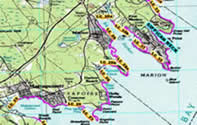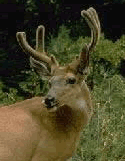 The Wildlife Health Monitoring Network (WHMN) is a collaboration between public and private institutions, including the general public, dedicated to a better understanding of health and disease in free-ranging wildlife. We hope that the suite of tools on this site will allow for timelier reporting and analysis of wildlife morbidity and mortality events. Through this process we will gain a national perspective, and expand our abilities to recognize atypical events, caused by either natural or man-made processes. Read a fact sheet about the Wildlife Health Monitoring Network here. The Wildlife Health Monitoring Network (WHMN) is a collaboration between public and private institutions, including the general public, dedicated to a better understanding of health and disease in free-ranging wildlife. We hope that the suite of tools on this site will allow for timelier reporting and analysis of wildlife morbidity and mortality events. Through this process we will gain a national perspective, and expand our abilities to recognize atypical events, caused by either natural or man-made processes. Read a fact sheet about the Wildlife Health Monitoring Network here. |
|
 One goal of the U.S. Interagency Strategic Plan for the development of an “Early Detection System for Asian H5N1 Highly Pathogenic Avian Influenza in Wild Migratory Birds" is to development a National database, that can contain HPAI data collected in accordance with Plan guidelines, and can be used by all agencies, organizations, and policy makers. As part of its Wildlife Health Monitoring Network, the Wildlife Data Integration Network has created this National HPAI Early Detection Data System for this purpose. We expect that the content and format will change frequently based on the contributions and needs of the many collaborators in this effort. One goal of the U.S. Interagency Strategic Plan for the development of an “Early Detection System for Asian H5N1 Highly Pathogenic Avian Influenza in Wild Migratory Birds" is to development a National database, that can contain HPAI data collected in accordance with Plan guidelines, and can be used by all agencies, organizations, and policy makers. As part of its Wildlife Health Monitoring Network, the Wildlife Data Integration Network has created this National HPAI Early Detection Data System for this purpose. We expect that the content and format will change frequently based on the contributions and needs of the many collaborators in this effort. |
|
 The Chronic Wasting Disease Data Clearinghouse (CWDDC) is a collaboration of state, federal and tribal agencies interested in examining the occurence of chronic wasting disease (CWD) on a regional and national basis. This site has been established as a data management tool for CWD testing results, either through direct data entry, or transfer from agency files. Along with reporting and browsing mechanisms, the system also offers the use of geographic information systems (GIS) for data analysis and exploration. The Chronic Wasting Disease Data Clearinghouse (CWDDC) is a collaboration of state, federal and tribal agencies interested in examining the occurence of chronic wasting disease (CWD) on a regional and national basis. This site has been established as a data management tool for CWD testing results, either through direct data entry, or transfer from agency files. Along with reporting and browsing mechanisms, the system also offers the use of geographic information systems (GIS) for data analysis and exploration. |
|
 The Seabird Ecological Assessment Network (SEANET) is a collaborative project of over 50 non-profit organizations and agencies collecting data on seabird mortality throughout the northeastern US. SEANET volunteers monitor stretches of beach once or twice per month, collecting data on bird mortality, live birds, and beach conditions. Because regular beached bird surveys have not been done in this region, these surveys will provide baseline information about bird mortality, as well as help detect mass mortality events such as oil spills. Numerous other threats such as contaminants, diseases, and offshore development threaten coastal and marine birds, which can serve as indicators of ecosystem and human health. We currently have over 300 volunteers and students monitoring beaches from New Jersey to Maine! The Seabird Ecological Assessment Network (SEANET) is a collaborative project of over 50 non-profit organizations and agencies collecting data on seabird mortality throughout the northeastern US. SEANET volunteers monitor stretches of beach once or twice per month, collecting data on bird mortality, live birds, and beach conditions. Because regular beached bird surveys have not been done in this region, these surveys will provide baseline information about bird mortality, as well as help detect mass mortality events such as oil spills. Numerous other threats such as contaminants, diseases, and offshore development threaten coastal and marine birds, which can serve as indicators of ecosystem and human health. We currently have over 300 volunteers and students monitoring beaches from New Jersey to Maine! |
|



